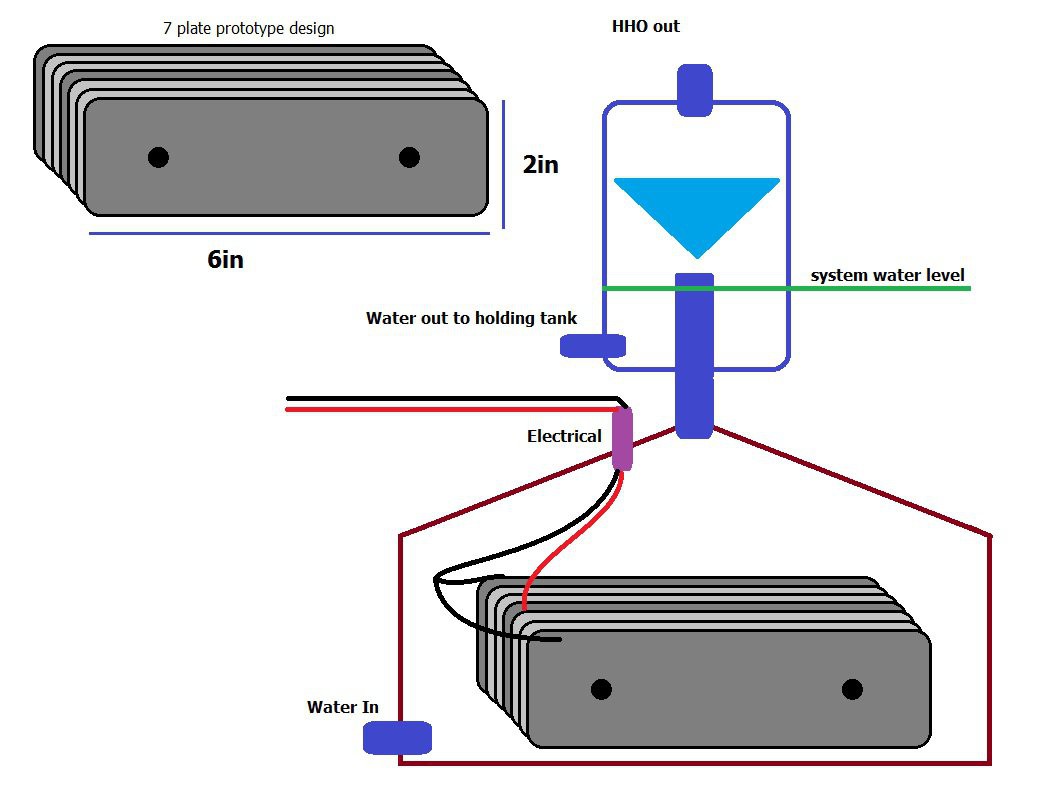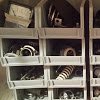Gasoline, propane, and other fuels are not cheap and harm the environment. There are many other alternatives to fossil fuels out there but not many are easy to adapt to 100+ year old engine technologies that we use today. I started looking into HHO gas because production of HHO is fairly simple and could be done cheaply. Since the gas is relatively dangerous to contain and store development of an on-demand HHO production setup is the best route to go.
If a simple, safe, and reliable HHO production method could be produce to run on 12v DC power this method could be open to various uses. I picked a 12v DC system because automotive batteries are easy to obtain in most places and are common around the world. Charging systems for 12v batteries give various off the shelf options from solar charging to the standard wall charger which makes it easier to charge generator's power supply.
This may not be the most efficient way to make fuel for an internal combustion engine but it is a very green way that can reduce emissions and bring fuel and power to people who could otherwise not afford a regular fuel bill. Think of the average farmer. If they can run a small tractor or machine on HHO instead of gasoline by using a couple of batteries and a HHO generator they save a massive amount of money on the most costly items to operate on the farm. The farmer is also reducing the amount of smog in the air and keeping their land clean and free of fuel spills.
In one of my previous experiments I used a small amount of HHO stored in a balloon to run a small gas engine. This worked and ran the engine for a few seconds. When I tried to start the engine after it shut down I had a carburetor backfire and the hydrogen in the fuel line and balloon ignited. If this were connected to the glass jar I was making the HHO in there could have been dangerous results. Some of the problems came from the ignition timing of the engine which was set too early to run HHO. I need to find a way to modify the ignition coil or the magnets on the flywheel to make it fire at least 10 degrees later from where it is firing right now. This will make sure the intake valve is closed completely and put the piston at the correct position to fire. I think by moving the ignition coil will be the best fix for the problem. Making an adjustable bracket so I can play with ignition timing quickly.
With my current production process there are issues that will need to be addressed.
-The HHO generation process needs to be miniaturized as much as possible to create the most HHO in the least amount of space.
-Water solution gets hot during the production process.
-Safety. Gasses need to be evacuated from the generator as quickly as possible. This will help keep the gas bubbles separated as much as possible until they evacuate the system ready for ignition.
-Extra water. Since the system needs to be submerged in water to safely operate extra water storage is needed. A water level float can also help by shutting down the system if the water tank is low.
System Draft.
I have posted a picture for my idea. BEHOLD MY MSPAINT SKILLS! The system can be broken down into different components.
-Water storage and re-circulation.
Water will be consumed in the generation process so the system needs to be continuously fed. A water storage tank containing a safety shut off switch will keep the system full and shut it off if the water runs out.
-Excess gas removal.
I want to remove the gas from the chamber as fast as possible but with water moving in the system gasses have a possibility of moving around in the system with the water. Using a vented tank placed after the reaction chamber I hope to scrub the excess gasses from the water solution making it gas free before entering the pump and storage chamber.
-Gas generation
The gas generator and the gas itself need to be isolated from the rest of the system as much as possible. Keeping the generator fully submerged in water and venting out the gasses for use as fast as possible...
 TheThriftstoreHacker
TheThriftstoreHacker



thats a good idea but i already saw this idea on another website best basketball highly recommended this for gas carburetor.